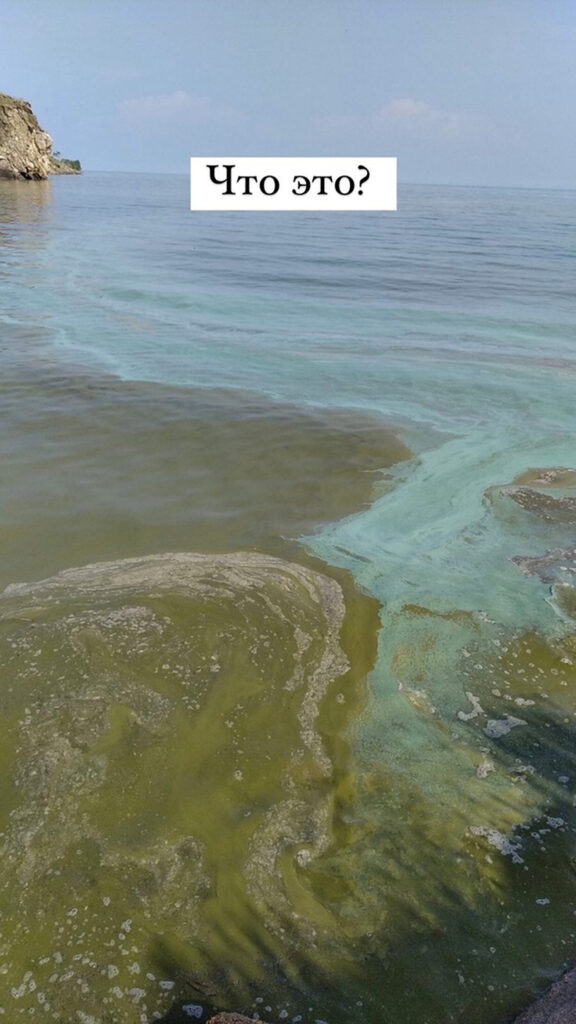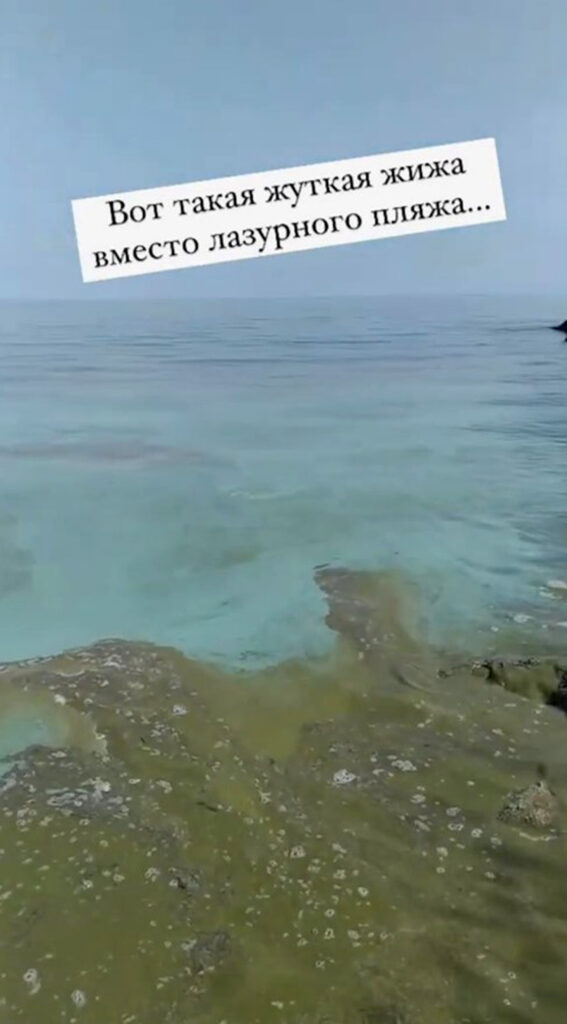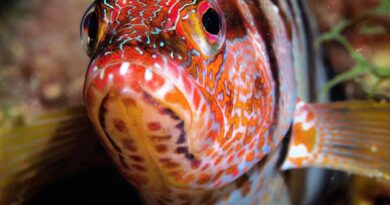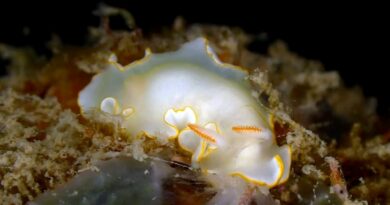Worlds Largest Freshwater Lake Hit By Eco Disaster As Polluted Sludge Washes Up On Shore
A shocking dead zone where even the algae are dying and the entire area has a foetid smell has appeared over several kilometres in a lake that holds almost a quarter of the world’s fresh surface water.
The dead zone showing several kilometres the late covered with a strange green slick was filmed by Tatyana Jdanova who shared the images with Newsflash.
She said she had taken them while visiting Lake Baikal, positioned between the Russian federal subjects of Irkutsk Oblast and the Republic of Buryatia.

With 22 to 23 percent of the world’s fresh surface water, Lake Baikal is considered the world’s largest freshwater lake by volume.
It is also the world’s deepest lake with a maximum depth of 5,387 feet, and is the planet’s oldest lake, originating 25 to 30 million years ago.
After visiting the Russian lake, Jdanova said: “In the area around the eastern coast of Olkhon Island (third largest lake island in the world), a dozen kilometres along the coast and further out to sea, there is a disgusting slime.

“The view of the entire coastal strip looks like a swamp and has a fetid odour. Among this, there is a strip of some kind of white mass in the water, which spreads for several kilometres among dead algae. It looks like some chemicals were poured in.
“The trail of this terrible dead zone goes towards Buryatia and beyond the lake’s horizon. There is a fetid odour on the shore, and it’s a terrible sight.”
According to reports, local residents fear that an ecological disaster has occurred on Lake Baikal, and are urging everyone to highlight the situation and share social media posts and information.

Natalya Ryaguzova, spokesperson for the Baikal interregional environmental prosecutor’s office, has confirmed that an investigation is underway.
She added that water samples were taken near the village of Peschanka and sent to a laboratory for analysis.
According to the news site Pravo, experts at the Limnological Institute of the Siberian Branch of the Russian Academy of Sciences reported that the slick may have been caused by paint and varnish contamination.

However, Ryaguzova stated that it was too early to talk about the cause of the pollution while the investigation is continuing.
During an initial inspection of the lake, experts reportedly found high levels of E. coli (Escherichia coli) in Lake Baikal, indicating fresh faecal contamination.
It is unclear when the lab results will be made public.



